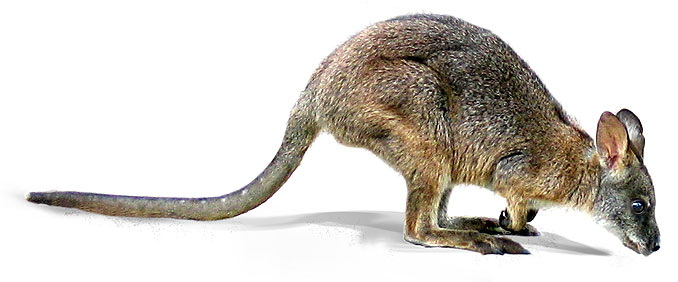Parma Wallaby
This wallaby got its name from an Aboriginal word ~ “parma”.
Parma Wallabies ~ Macropus parma
The meaning of this word is unknown. Other common names for this wallaby are the White-Throated Pademelon and the White-throated Wallaby.
This species was once thought to be extinct. However, it was found at Gosford not far from AWWP in 1967. Surveys have been carried out in since then confirming that Parma Wallabies still inhabit NSW.
Parma Wallabies live in wet and dry sclerophyll forest and occasionally are found in rainforest areas. Where they inhabit usually has thick understorey where it is almost invisible to predators.
This wallaby is mostly nocturnal taking cover in the thick understorey during the day and emerging at night to feed on close by grassy patches and herbs.
The young wallaby or joey lives in its mother’s pouch up until it is about 7 1/2 months then staying at its mother’s foot for a further 5 months still occasionally sticking its head in the pouch for a drink.
Identification
They are brownish – grey in colour with white fur down the throat and chest. They have an almost black stripe down the spine and a white stripe on the upper cheek. Male Parma Wallabies are approx. 5kg and females smaller at approx. 4kg.
They are often mistaken for Red-Necked Pademelons however Parma Wallabies have the distinctive white stripe on cheek and a longer tail. The pademelons have the red shoulders and necks and have thicker, shorter tails.
The Parma Wallaby’s status is rare and scattered and only found in NSW.
At the AWWP our Parma Wallabies can be seen in the morning or late afternoon near the visitor centre.
Our two females have joeys in the pouch and can be seen sticking their heads out for a look around. Due to their small numbers in the wild the rangers at AWWP are looking to increase our Parma Wallaby population so our visitors can see more of these beautiful wallabies and why it is important to help conserve and protect their habitats

